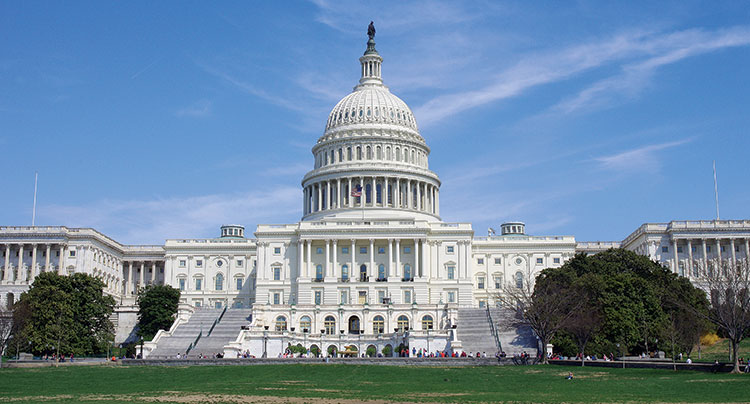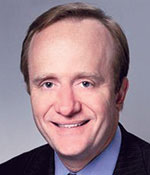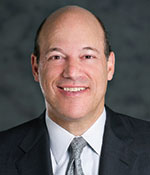This month, the pest management industry will again descend on Capitol Hill to make their case to the powers that be in Washington.

Photo: ©iStock.com/flySnow
The National Pest Management Association’s (NPMA’s) Legislative Day is an annual event that’s been going strong since 1987 and is essential to the industry. Far more than just a meeting of minds packed with valuable educational sessions — although it most certainly is that, too — Legislative Day also provides pest management professionals (PMPs) a pipeline to the ears of Congress in the city where public policy is sculpted.
Despite the given name of the occasion, Legislative Day actually stretches across three days (March 13-15) at the Capital Hilton in Washington, D.C.
The NPMA continues to be the industry’s most visible and effective advocate. The association acts as the voice of PMPs, manufacturers and distributors of pest management tools, addressing issues and concerns in Congress and before federal agencies, the administration and the courts. The NPMA also works with state partners to ensure the industry is being heard and recognized in state capitals, and acts as a source for individuals who want to know more about public policy and how it affects pest management.
While the first day of the Legislative Day event is largely devoted to committee meetings, the educational portion begins in earnest on the second day (Monday, March 14). This day is packed with opportunities for those in the industry looking to broaden their scope of understanding with regard to industry trends, opportunities, challenges and issues (political and otherwise) that have a direct impact on pest management.
What follows is a primer for those who are either still on the fence or will be making the trek to D.C. this year for the first time.
The Issues
Every year brings a new set of challenges for PMPs, as well as for industry manufacturers and suppliers. Some issues extend from one year to the next, either unresolved or still in the process of being considered, hashed out and pushed forward. This year’s issues include:
- New overtime regulations — Last year, the U.S. Department of Labor (DOL) set forth a proposal for new overtime regulations in response to a 2014 directive by President Obama to update overtime rules under the federal Fair Labor Standards Act (FLSA). These new regulations assert that any worker earning less than $23,660 per year must be paid overtime by their employer, if that employee works more than 40 hours a week. This guarantees overtime pay at a rate of 1.5 times employees’ regular rate of pay. Despite some specific “white-collar” exemptions, the DOL has proposed raising the minimum overtime threshold from $23,600 to approximately $50,440 — a 113 percent increase. This means anyone making less money must be paid overtime if they work more than 40 hours a week. This is concerning on many levels for the industry, particularly because the proposal doesn’t recognize regional differences in cost of living.
- Clean Water and NPDES Permits — The 1972 Clean Water Act (CWA) gives the U.S. Environmental Protection Agency (EPA) authority to regulate all waters of the U.S (WOTUS), via authorization of permits for the National Pollutant Discharge Elimination System (NPDES). WOTUS has historically been defined as “navigable waters” — that is, waters on which boats can travel. However, the definition of “boats” had never been keenly articulated. Therefore, last May the EPA and the Army Corps of Engineers released the EPA’s definition of navigable waters, which adds tributaries and adjacent waters if they significantly affect the chemical, physical or biological integrity of (in the EPA’s words) “traditional.” The new definition was considered unnecessarily expansive. Additionally, it magnifies regulatory oversight, which often burdens the industry in numerous ways. It should be noted, however, that this particular issue might be of greater concern to the agricultural industry than pest management.
- Pollinators — While it’s still unclear what is causing higher pollinator colony losses, known as colony collapse disorder (CCD), pesticides — specifically neonicotinoids — have been looked at as a potential cause. But most experts agree there is not enough evidence to prove pesticides are the cause of bee loss. The NPMA (and the industry, by extension) acknowledge and understand the importance of pollinators, and have made this a priority, going so far as to develop industry-approved best management practices (BMP) guidelines. Last year, the Obama administration’s White House Pollinator Task Force released a 58-page plan — “National Strategy to Promote the Health of Honey Bees and Other Pollinators” — in which the EPA acknowledged the importance of pesticides for the protection of food supplies and human health, and the importance of balancing benefits with risks by separating beneficial pollinators and pesticides in time and space. The EPA will soon propose binding language to the labels of 1,500 pesticide products, aimed at reducing exposure to managed honey bees and other pollinators. Pollinators topped last year’s Legislative Day discussions, but the issue is complex and ongoing. This year’s Legislative Day will likely be helpful for attendees who want to understand the details and implications of the issue. Check out Pest Management Professional’s (PMP’s) pollinator coverage in the August and October 2015 issues.

Paul Begala

Ari Fleischer
Opportunities and speakers
Highlights of this year’s Legislative Day include educational sessions that touch on a variety of policy-related topics — only some of which are listed below:
- Pesticides 2016: Public Policy Forecast
- Business Opportunities for Women-owned Businesses
- Structural Fumigation: Where Are We Now, and What Does the Future Hold
In addition to these invaluable educational opportunities, attendees will also get to enjoy Legislative Day’s lively roster of keynote speakers. Paul Begala, a CNN political commentator, and Ari Fleischer, author and former White House Press Secretary to President George W. Bush, will provide head-to-head keynote presentations on what to expect in 2016 from both sides of the aisle. There’s little doubt the rapidly approaching presidential election will figure largely into this popular annual presentation, which occurs during Monday’s ballroom lunch.

Sarah Elizabeth “S.E.” Cupp

Nicolle Wallace
On Monday afternoon, Nicolle Wallace, a New York Times political analyst and former White House Director of Communications, will share an insider’s perspective of the political news of the day, and offer her thoughts on upcoming elections.
Tuesday morning’s breakfast keynote, “The State of Play: Politics, Media and 2016,” will come courtesy of Sarah Elizabeth “S.E.” Cupp, a writer and conservative political commentator for CNN. She’ll discuss the current state and future of the GOP.
Following this her presentation, attendees will depart for appointments on Capitol Hill — where they’ll have the opportunity to share important information and articulate concerns to members of Congress.
Leave A Comment